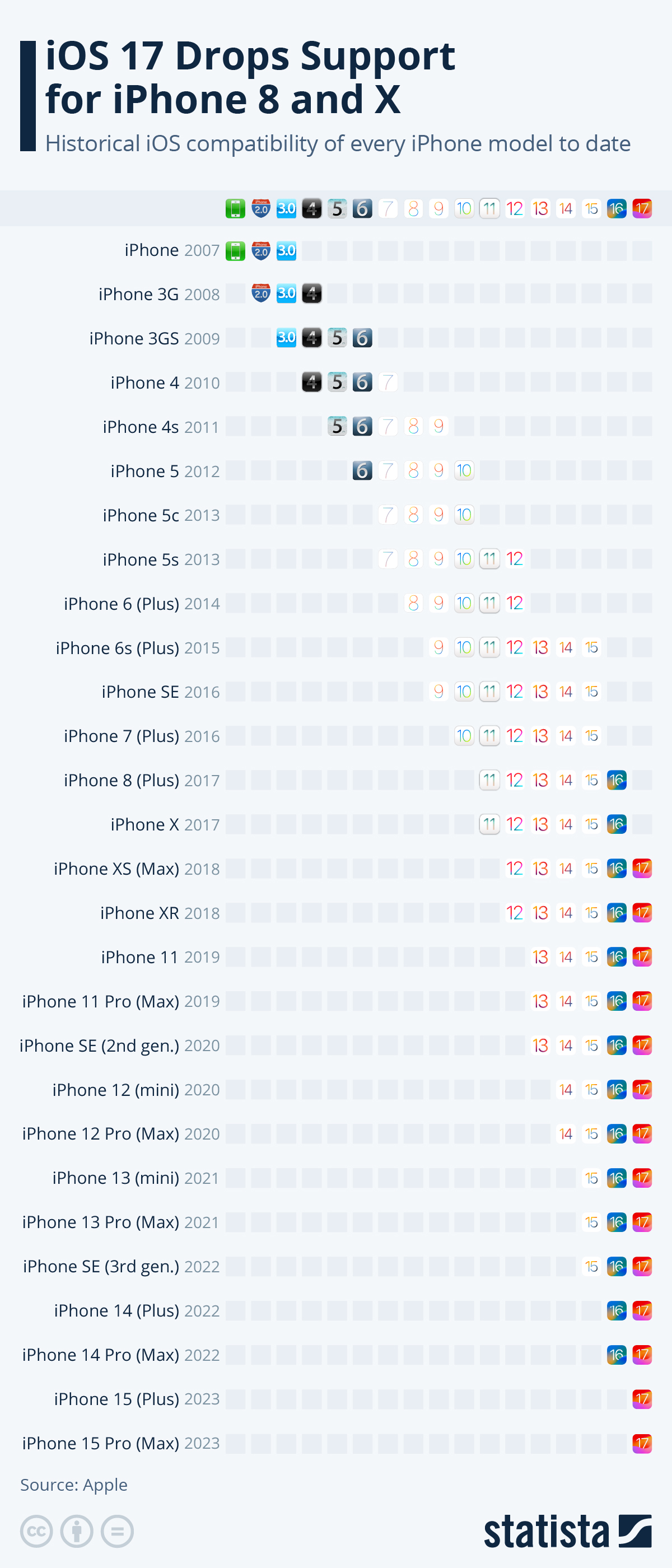While Apple's new line of smartphones won't be available until Friday, the latest version of its mobile operating system iOS is dropping today. With iOS 17, hundreds of millions of iPhone users get to enjoy a bunch of new features, even if they have no intention of switching to an iPhone 15 or iPhone 15 Pro.
Like last year, when Apple cut the iPhone 6s, the first generation iPhone SE and the iPhone 7 from the list of devices compatible with iOS 16, some users will be left out in the cold, however, as iOS 17 will not support the iPhone 8 or iPhone X, both released in 2017. That means users will need an iPhone from 2018 or later to experience the latest update.
As the following chart shows, Apple has done a good job over the years of keeping older devices in the loop for a long time. While the original iPhone and the iPhone 3G received two major iOS updates, later models have typically gotten software updates for five to six years. Having been shipped with iOS 9, the iPhone 6s became the first generation to see a seventh iOS version, making it the technological equivalent of a tortoise outlasting generations of humans.




















